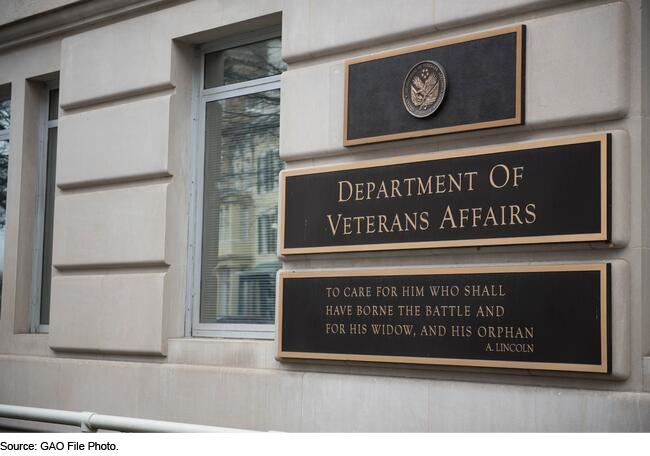Sexual Harassment: Opportunities Remain for VA to Improve Program Structure, Policies, and Data Collection
Fast Facts
We testified that VA has implemented 2 of the 7 recommendations from our June 2020 sexual harassment report, but significant issues still prevent the agency from effectively protecting its employees. Without additional action, VA will likely continue to be among agencies with a high percentage of employees reporting being harassed.
For example, VA continues to have the person who oversees personnel functions (e.g., hiring, promotions) also oversee the employment discrimination and harassment complaint processes. This can create a conflict of interest and erode employees' trust that sexual harassment complaints will be handled appropriately.

Highlights
What GAO Found
The Department of Veterans Affairs (VA) has taken steps to improve its efforts to prevent and address sexual harassment, but could realign its organizational structure, further strengthen policies, and better assess data. Most notably, VA has not taken sufficient action in response to our two priority recommendations on its structure for equal employment opportunity (EEO). GAO's 2020 report made seven recommendations for VA to address aspects of agency policies and complaint processes that may have hindered agency efforts to combat sexual harassment. VA has implemented two of these recommendations and five require additional action to be fully implemented. For example, VA has:
- Formalized its Harassment Prevention Program (HPP) and updated training materials. VA implemented two recommendations from GAO's 2020 report. First, VA formalized its HPP, which seeks to prevent harassment and address it before it becomes unlawful. In March 2022, VA finalized its HPP Handbook that outlines key processes the agency should follow in addressing sexual harassment allegations. Second, VA has developed new mandatory training that includes more information on sexual harassment and the reporting processes available to employees.
- Not yet realigned its EEO organizational structure to avoid potential conflicts of interest. GAO made two recommendations to help address potential conflicts of interest; neither has been fully implemented. For example, VA's EEO Director continues to oversee both EEO complaint processes and general personnel functions. According to the Equal Employment Opportunity Commission—the agency tasked to ensure agency compliance with EEO requirements—this practice does not adhere to one of its key directives to ensure fair complaint processing.
- Not yet fully reviewed policies and information documents to ensure consistency. GAO found some policies and information documents were not consistent with the overarching sexual harassment policy and some have outdated or missing information. VA said it is developing procedures to help ensure all policies are complete and accurate across VA, but has not yet completed its efforts.
- Not yet completed efforts to collect and assess complete information on sexual harassment. GAO found that VA lacked a full picture of sexual harassment at VA because it did not require managers to report all complaints nor had it assessed other available data. VA now requires managers to report all complaints, and it developed a tracking system to capture this information. However, VA has not assessed data on these complaints or finalized plans for assessing other available data.
- Not yet developed clear requirements for evidence needed to ensure corrective actions were taken. GAO found that VA did not require documentation of corrective actions taken in all sexual harassment cases. VA has since begun tracking some of these corrective actions. However, VA has not yet clearly specified to managers the procedures for documenting corrective actions.
Why GAO Did This Study
Sexual harassment in the workplace can cause harmful psychological, physical, occupational, and economic effects for workers. Several federal laws, executive orders, and agency directives are aimed at preventing and addressing sexual harassment at federal agencies.
GAO issued a June 2020 report (GAO-20-387) that reviewed VA's efforts to prevent and address sexual harassment at the agency. In this report, GAO made seven recommendations. This testimony discusses VA's efforts to implement GAO's recommendations to 1) ensure VA's EEO structure is properly aligned; 2) improve the agency's policies to prevent and address sexual harassment of VA employees; 3) collect and analyze data to inform VA about sexual harassment of its employees; and 4) improve relevant training.
To update the status of the recommendations, GAO analyzed newly-available federal survey data on the prevalence of sexual harassment and reviewed agency guidance and documentation.
Recommendations
In its June 2020 report, GAO made seven recommendations, including that VA ensure that its EEO Director position is not responsible for personnel functions; require managers to report sexual harassment centrally; and require additional employee training. VA is in various stages of implementing the recommendations. VA concurred with all but the EEO Director position recommendation, which GAO maintains is warranted.
